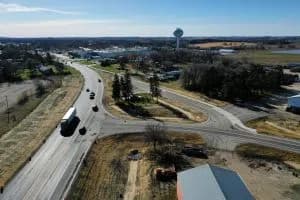County Approves Dead Lake Drainage Project, Partners with MNDNR
The Otter Tail County Board of Commissioners, acting as the county Drainage Authority, approved a drainage project near Dead Lake and agreed to partner with the Minnesota Department of Natural Resources. The decision establishes a governing partnership to oversee the work, a development that could affect shoreline property, agriculture, and local water management for residents in the area.

On Nov. 4 the Otter Tail County Board of Commissioners met as the Otter Tail County Drainage Authority and approved a drainage project located near Dead Lake. The board also agreed to partner with the Minnesota Department of Natural Resources to form a governing panel or partnership structure to oversee the project and associated drainage work. The action was reported on the Pelican Rapids Press website with a listing dated Nov. 13, 2025. The full reporting of project parameters and next steps was published behind a paywall.
County officials convened the Drainage Authority to move the matter forward under local procedures for drainage projects. By formally partnering with the state natural resources agency the county positions the project for coordination on environmental, habitat and water management issues. The creation or assignment of a governing panel indicates the board intends to centralize oversight, define responsibilities and coordinate permitting, monitoring and community engagement as the project progresses.
For residents near Dead Lake the approval carries practical implications. Drainage projects can influence water levels, shoreline conditions, wetland areas and agricultural drainage patterns. Those changes can affect private docks, shoreline stability, crop fields and recreational access. The partnership with the Department of Natural Resources suggests that fisheries, aquatic habitat and state permitting will be part of the discussion, which may shape both the scope of work and any mitigation measures required.
The Pelican Rapids Press notice did not make the full text of the county discussion available without subscription, so specific technical parameters, cost estimates and timelines were not publicly accessible through that listing. County records and public notices remain the primary sources for formal project documents, engineering reports and meeting minutes. Residents seeking details should consult the Otter Tail County website, reach out to the county drainage office and monitor Minnesota Department of Natural Resources communications for permit filings and environmental reviews.
This development fits within a broader pattern of local governments working with state agencies to manage surface water and drainage in a region where lakes and wetlands are central to environment and economy. Such partnerships require balancing property interests, agricultural needs, and ecological protections under state law and agency rules. The governing panel will likely become the forum for that balancing, managing technical work and public input.
Public engagement opportunities and formal hearings are typical steps in similar projects. Local landowners and lake users are advised to watch for official notices from the county and the Department of Natural Resources to learn about upcoming meetings, comment periods and opportunities to review project documentation.

